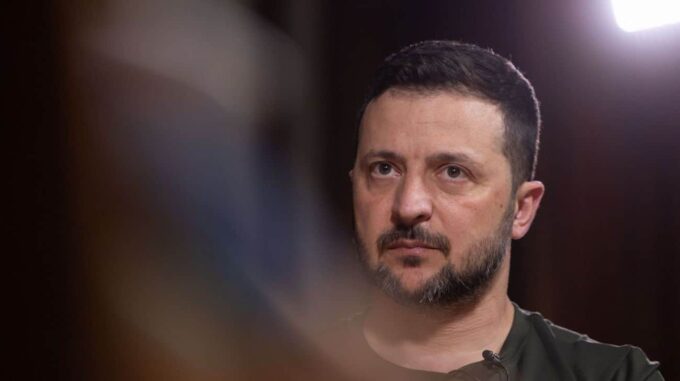Зеленський підтвердив: США передали на Близький Схід 20 тисяч ракет, передбачених для України

In an important announcement that has already gained widespread media coverage, Ukrainian President Volodymyr Zelensky publicly stated that the United States of America has transferred a large quantity of weaponry—specifically, 20,000 rockets, which were previously intended for use by the Ukrainian armed forces in their fight against Shahed drones—to the Middle East. This came as a surprise to many analysts, since these rockets had previously played a crucial role in Ukraine's offensive defense strategy, especially in countering unmanned attacks from Russian and pro-Russian forces. During an interview with ABC News, the full video of which was released by the president's press service, Zelensky said that this news was shocking to him. He noted that the issue regarding the rockets arose during the administration of former President Donald Trump, when U.S. Secretary of Defense Steven Austin and Ukrainian leadership discussed possibilities of military cooperation. The key element of this agreement was a so-called project in which, according to Zelensky, Ukraine intended to replenish its stockpiles. "We had serious problems with 'Shahid' drones," Zelensky said. "This is a significant challenge for us. We are doing everything we can to fight them effectively and are looking for ways to combat them effectively. One of the key projects was the purchase of 20,000 rockets to deal with these unmanned vehicles. It was an affordable and effective solution—using specialized technologies that would help us shoot down enemies quickly. We placed great hopes on these rockets, and given the circumstances, we were very grateful for this support." However, he added, the morning of that day brought unexpected news: "My Defense Minister informed me that these 20,000 rockets had been transferred to the United States and are now in the Middle East. This was a big surprise for me." What preceded this statement? According to media reports and sources, on June 5, The Wall Street Journal published information indicating that the administration of U.S. President Joe Biden had made a decision to redirect American military resources. Specifically, the report mentioned specialized interceptors used by Ukraine to shoot down Russian drones—advanced drone countermeasures that are a cornerstone of Ukraine’s defensive arsenal. According to the publication, these interceptors are now being transferred to the U.S. Air Force for use in the Middle East. This decision to reorient resources was made privately and was communicated to Congress, with discussions taking place behind closed doors. This limits public disclosure and raises questions about the transparency of military and political decisions among allies. It is noted that such steps provoke numerous questions regarding Ukraine’s future tactical and strategic support from the U.S. Meanwhile, American officials assure that these actions do not signify a change in the nature of assistance to Kyiv, but rather involve a redistribution of resources in response to new geopolitical challenges and efforts to maintain regional influence. Nonetheless, many in Ukraine and beyond are asking: what role does arms division play in this game? Could this decision lead to a strategic loss for Ukraine’s front in its confrontation with Russian forces? The situation remains tense and causes concern among Ukrainian military and political leaders, as access to essential defense means is a critical element in ensuring the country's security. At the same time, considering the diplomatic and military actions of the U.S., it appears that Washington’s strategic interests are increasingly focused on stabilizing the Middle East, which, according to experts, could have far-reaching consequences for global conflicts and the balance of power in the region. Thus, Ukrainian and international experts are actively discussing current events and the potential impact of such reallocation of weapons on future confrontation and security in Ukraine. It is possible that further diplomatic maneuvering and resource shifts on a global scale could determine the course of the conflict and relations between the U.S., Ukraine, and Middle Eastern countries.

